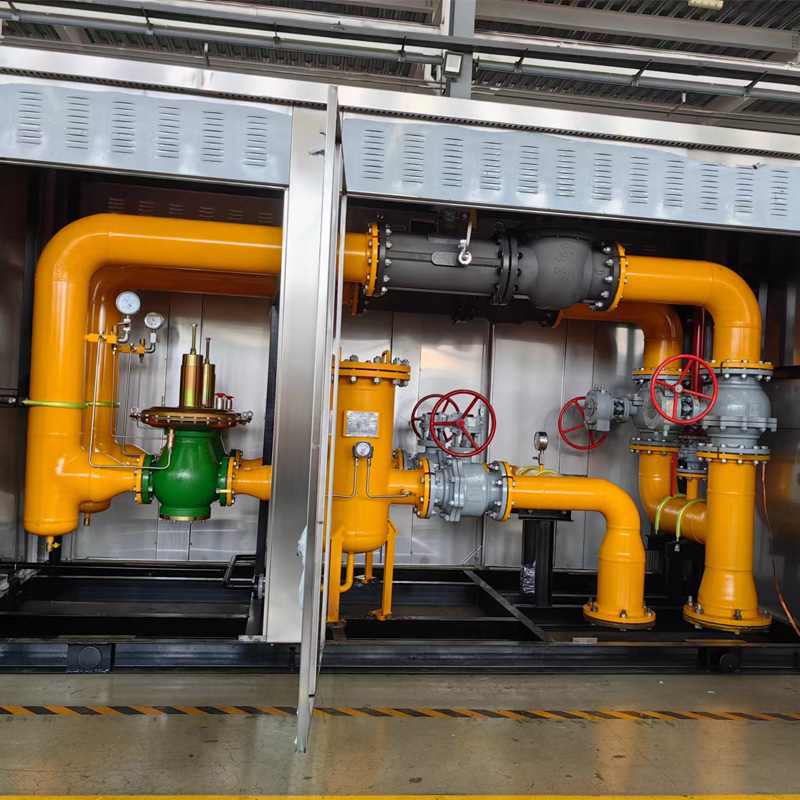
Dec . 04, 2024 16:51
Back to list
pressure regulating device
Understanding Pressure Regulating Devices Ensuring Safety and Efficiency
Pressure regulating devices play a crucial role in various industries by controlling and maintaining the pressure of gases and liquids within a designated range. These devices are essential for the safe and efficient operation of systems ranging from residential heating systems to complex industrial processes. In this article, we will explore the functions, types, and applications of pressure regulating devices, as well as their importance in day-to-day operations.
What is a Pressure Regulating Device?
A pressure regulating device, often referred to as a pressure regulator, is a mechanical device designed to reduce and stabilize pressure from a source, such as a gas cylinder or liquid supply, before it reaches the end-use application. By ensuring that the pressure remains within safe and efficient limits, these devices prevent equipment damage, accidents, and inefficiencies in the system.
How Do Pressure Regulators Work?
The primary function of a pressure regulator is to maintain a constant output pressure regardless of changes in input pressure. When the pressure from the source increases, the regulator adjusts the flow to lower the pressure to the desired level. Conversely, if the pressure drops, the regulator allows more fluid to flow through to maintain the set output pressure. This is accomplished through various mechanisms, including diaphragms, springs, and valves, which work together to balance the pressures.
Types of Pressure Regulators
There are several types of pressure regulating devices, each suited for specific applications
1. Single-Stage Regulators These are straightforward devices that reduce high inlet pressure to a lower, usable pressure in a one-step process. They are often used in applications where inlet pressure does not vary significantly.
2. Two-Stage Regulators These regulators provide an additional level of pressure reduction and are ideal for applications with fluctuating inlet pressures. The first stage reduces the high pressure, while the second stage ensures a steady output pressure.
3. Electronic Regulators Incorporating advanced technology, electronic regulators utilize sensors and control systems to adjust pressure dynamically. They offer high precision and are typically used in sophisticated industrial applications.
pressure regulating device

4. Back Pressure Regulators These are designed to maintain a specific pressure upstream of the regulator. They are commonly used in systems that need to control flow rates and prevent upstream pressure build-up.
Applications of Pressure Regulating Devices
Pressure regulating devices can be found in a variety of settings, including
- Natural Gas Distribution Regulators are essential in natural gas systems to ensure safe delivery to homes and businesses by maintaining pressure at a manageable level.
- Medical Equipment In medical settings, pressure regulators control the flow of oxygen and anesthetic gases, ensuring patient safety.
- Industrial Processes Many manufacturing processes rely on regulated pressures for the operation of machinery, chemical reactions, and material handling.
- HVAC Systems Pressure regulators manage the flow of refrigerants and other fluids in heating, ventilation, and air conditioning systems, promoting efficiency and comfort.
Importance of Pressure Regulators
The significance of pressure regulating devices cannot be overstated. They enhance safety by preventing over-pressurization, which can lead to catastrophic failures or injuries. Additionally, by ensuring that systems operate efficiently, they contribute to cost savings and the longevity of equipment. Industries that rely on consistent pressure can significantly reduce maintenance costs and downtime by incorporating reliable pressure regulation.
In conclusion, pressure regulating devices are vital components in managing and controlling pressure across many applications. Their ability to ensure safety, efficiency, and reliability makes them indispensable in both residential and industrial settings. Understanding the types and functions of these devices can aid in selecting the right solution for specific needs, ultimately leading to enhanced operational performance.
Next:
Latest news
-
Safety Valve Spring-Loaded Design Overpressure ProtectionNewsJul.25,2025
-
Precision Voltage Regulator AC5 Accuracy Grade PerformanceNewsJul.25,2025
-
Natural Gas Pressure Regulating Skid Industrial Pipeline ApplicationsNewsJul.25,2025
-
Natural Gas Filter Stainless Steel Mesh Element DesignNewsJul.25,2025
-
Gas Pressure Regulator Valve Direct-Acting Spring-Loaded DesignNewsJul.25,2025
-
Decompression Equipment Multi-Stage Heat Exchange System DesignNewsJul.25,2025

